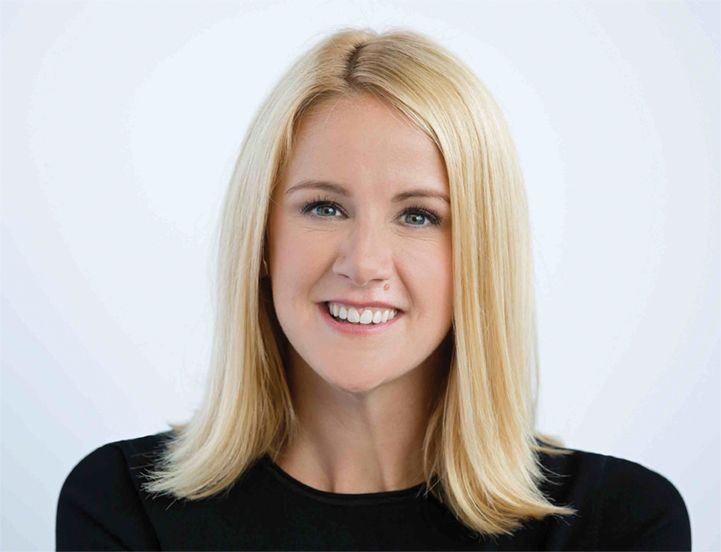Treatment of the infertile couple
Peer-Reviewed
Effective treatment will depend on the diagnosis, but can range from simple to very complex.
This is the second part of a 2-part Infertility series. Read Part 1: The diagnosis of the infertile couple
Infertility treatment begins with shared decision-making with the couple. Besides the usual risks, benefits, and alternatives, the couple’s desire for a biologic child, their resources, and their insurance coverage will govern subsequent therapy.
Accurate diagnosis from a basic infertility evaluation often results in an easy therapeutic recommendation.
Based on their diagnosis, a couple may be offered a variety of treatments: often simple, sometimes very complex. Genetic testing of couples or their embryos will also provide additional opportunities in family building. Donor gametes, donor embryos, and adoption are often the most cost-effective route to having a child.
Ovulation induction
Clomiphene citrate is a synthetic estrogen receptor modulator. By blocking the estrogen receptor at the level of the hypothalamus and pituitary, the negative feedback of estrogen is eschewed and gonadotropin-releasing hormone (GNRH) pulses increase follicle-stimulating hormone (FSH) and luteinizing hormone (LH) production.1
These elevated gonadotropins stimulate early follicle development, increase estradiol production, and mature the oocyte. Clomiphene is most often administered as a daily oral dose for 5 days in the early follicular phase (eg, beginning between day 3 and day 5 of the menstrual cycle), beginning at 50 mg/day.
Clomiphene citrate causes FSH and LH to rise; after discontinuation, gonadotropins fall and allow the normal estrogen feedback of a developing follicle to return. Thus, when the oocyte is mature, an LH surge is triggered by the ovary, or an exogenous human chorionic gonadotropin hormone (HcG) trigger can be administered, and ovulation ensues.
Table

Adverse effects (AEs) of clomiphene citrate include hot flashes, thickened cervical mucus, vaginal dryness, scotomata, pelvic “heaviness,” and headaches.1 Hyperstimulation of the ovaries is rare. Because clomiphene citrate may cause thickened cervical mucus, it is often used in combination with intrauterine insemination, especially in treatment of unexplained infertility.2
Aromatase inhibitors act in a similar fashion to clomiphene citrate, although by a different mechanism.
These medications block aromatase, the enzyme which converts androgens to estrogens; estrogen is decreased to menopausal levels. The low concentration of estrogen results in increased GNRH pulses and stimulates gonadotropin release from the pituitary.
Aromatase inhibitors are given orally, starting at 2.5 mg per day from day 3 to 8 of the cycle. AEs include hot flashes, vaginal dryness, nausea, muscle aches, and headaches. Data from meta-analyses, registry studies, and retrospective cohort studies do not appear to suggest increased risk of birth defects with either clomiphene citrate or letrozole.3-10
Patients treated with clomiphene citrate or aromatase inhibitors may use an ovulation predictor kit to measure the LH surge and time their intercourse accordingly. Ovulation occurs an average of 7 days after discontinuation of clomiphene citrate and approximately 34 to 40 hours after detection of the LH surge.
Thus, patients may start testing their urine with an ovulation predictor kit on day 11 of their cycle and have intercourse on the day of the surge and the day after. Both clomiphene citrate and aromatase inhibitors have a multiple pregnancy rate of less than 10%, the majority of which are twin pregnancies,11 compared with 3% of the general population.
Gonadotropins (LH and FSH) directly stimulate the ovarian follicles and have been used in the treatment of anovulation related to eugonadotropic hypogonadism (eg, polycystic ovary syndrome), when clomiphene citrate or aromatase inhibitors fail, as well as for women with hypogonadotropic hypogonadism who will typically not respond to clomiphene or letrozole.
Estrogen concentrations are stimulated to much higher than physiologic concentrations and thus inhibit the natural ovulatory LH surge; thus, the LH surge must be exogenously administered and is done so by treating with HcG, which has LH activity.
Gonadotropin administration should be performed only under the supervision of a reproductive endocrinologist. Administration must be monitored by frequent estradiol measurement and ultrasonography of the ovaries.12 Multiple pregnancy rates can be in excess of 25% per cycle with 3% to 5% higher-order multiple pregnancy rates.
Another serious consequence of gonadotropin treatment is ovarian hyperstimulation syndrome (OHSS), resulting in ascites, pleural effusion, hyponatremia, pulmonary edema,13,14 and vascular depletion, with the resultant hemoconcentration leading to decreased renal perfusion and pulmonary embolism.
In light of the high multiple pregnancy rate as well as the need for stringent monitoring and cycle cancellation,5 gonadotropin therapy for anovulation related to eugonadotropic hypogonadism is generally discouraged.
It is important to note that once a patient is ovulating, she has the same chance of conceiving that fertile patients of similar age have, unless another infertility factor is present.
Therefore, after 4 to 6 ovulatory cycles without pregnancy in an anovulatory patient, the patient should be evaluated for other causes of infertility, if a workup has not already been completed.15
Intrauterine insemination
Intrauterine insemination (IUI) is used in the treatment of mild male factor infertility, cervical factor infertility, and, along with ovarian stimulation, in the treatment of unexplained infertility. This requires serial dilution of the ejaculate,16 centrifugation, and reconstitution with media.
The washed, concentrated sperm is placed into the uterus with a catheter 24 to 36 hours after an endogenous LH surge or the exogenous ovulation trigger. The sperm will be waiting in the Fallopian tube to fertilize the oocyte after ovulation.
For unexplained infertility in the absence of male factor, IUI alone does not increase pregnancy rates over expectant management; therefore, IUI should be utilized in combination with OS in these instances.17
If severe male factor infertility exists (eg, less than 4 million total sperm, or the strict morphology reveals less than 4% normal forms), the pregnancy rate with in vitro fertilization (IVF) is higher than with IUI.18
Ovarian stimulation
Ovarian stimulation (OS) may be used to treat unexplained infertility, male factor infertility, or hypogonadotropic hypogonadism, and may be performed with clomiphene citrate, aromatase inhibitors, or gonadotropins. The premise of OS is to allow for 2 or 3 oocytes to be ovulated and increase the statistical change of conception that might occur in any 1 cycle.
Pregnancy rates with OS depend on the diagnosis, choice of therapy, sperm viability, and ovarian response. OS in combination with IUI is largely used in the treatment of unexplained infertility or male factor infertility; particularly for unexplained infertility, neither clomiphene nor letrozole is more effective than expectant management when combined with timed intercourse alone.17 Pregnancy rates with OS-IUI depend on the diagnosis, sperm viability, and ovarian response.
With respect to OS with gonadotropins, the Fast Track and Standard Treatment Trial randomized women aged less than 40 years with unexplained infertility to treatment with clomiphene-IUI followed, if unsuccessful, by (1) gonadotropins-IUI or (2) IVF; results showed that the time to pregnancy was significantly shorter in the clomiphene to IVF group.19
Therefore, in most cases, it is generally recommended that unsuccessful trials of OS with oral medications be followed by IVF rather than gonadotropins. Additionally, multiple pregnancies, as well as OHSS, represent serious consequences of OS with gonadotropins, and their use to treat unexplained infertility is not recommended.17
Fertility drugs and cancer
Infertile women may be at an increased risk of invasive ovarian, endometrial, and breast cancer, but fertility drugs do not appear to increase this risk significantly.20,21
Small cohort studies suggest that infertility medications may increase the risk of borderline ovarian cancer slightly in infertile women treated with infertility drugs, but the absolute risk is small. However, it appears that this risk does not occur unless clomiphene is given for an extended time, and it has not been shown with aromatase inhibitors.22
In Vitro Fertilization
In vitro fertilization (IVF) initially used for the treatment of tubal factor infertility in 1978, has been extended to treat a variety of causes of infertility; IVF is also used by noninfertile individuals pursuing fertility preservation.
Indeed, IVF allows women without oocytes or a uterus and men without sperm in the ejaculate to have a biological child. IVF is indicated in cases of severe oligospermia or azoospermia, untreated tubal factor, or infertility in women 40 years and older, and it may also be utilized in women with endometriosis, anovulation, or unexplained infertility when ovulation induction and IUI have been unsuccessful. IVF is also utilized when genetic screening of embryos is planned.
IVF protocols vary depending on the indication, patient age, treatment history, and other considerations.
A typical IVF cycle involves, first, ovulation induction to stimulate multiple ovarian follicles, followed by oocyte aspiration using a transvaginal ultrasound-guided needle. Collected oocytes are fertilized in vitroby mixing them with spermatozoa (IVF) or by injecting selected spermatozoa directly into the oocyte cytoplasm (intracytoplasmic sperm injection).
Embryos are cultured under carefully controlled conditions, optimizing oxygen concentration, embryo culture media, and other modifications to promote the development of high-quality embryos.
The embryos are then transferred into the uterus through a catheter under ultrasound guidance. In the case of severe male factor infertility, sperm retrieval from the epididymis or testis may also be performed. Embryos not transferred may be cryopreserved to transfer in a later cycle (frozen embryo transfer).
Preimplantation genetic testing (PGT) is a procedure in which cultured embryos can be biopsied and tested in order to select the most appropriate embryos for transfer.
Prior to transfer, PGT can be used to screen for euploid embryos for transfer (PGT-aneuploid [PGT-A]); however, specific groups of infertility patients most likely to benefit from PGT-A have not been clearly defined. PGT may also be utilized to identify embryos with a single gene disorder (PGT-monogenic or preimplantation genetic diagnosis); this would be used, for example, if both partners are carriers for the same autosomal recessive condition, such as cystic fibrosis.
Donor gametes and surrogacy
Donor gametes may be considered when either partner has severe defects in gamete quality or quantity. For males, such situations may include severe oligospermia, azoospermia, failure of fertilization in prior IVF cycles, ejaculatory dysfunction, or other severe male factor infertility (ie, after gonadotoxic chemotherapy).
Donor oocytes or embryos may be used when a woman’s oocyte reserve is low (ie, advanced reproductive age or diminished ovarian reserve) or oocyte quality is poor, when multiple attempts at IVF with her own oocytes have failed, or when a condition such as premature ovarian insufficiency makes the likelihood of conceiving with her own gametes extremely low.
Donor gametes may also be utilized when either partner has a significant genetic defect, or if there is a family history of a genetic condition for which carrier status cannot be determined.
Females without male partners, same-sex couples, or males without female partners may also utilize donor gametes, either anonymously from donor gamete banks or known donors.23
A gestational carrier (GC) is defined as a woman who carries a pregnancy and is not sexually intimate with the genetic parents or gamete donors.24
A GC may be used when a medical condition prevents a woman from carrying a pregnancy or when she has a congenital or surgical absence of a uterus. A GC may also be indicated if a pregnancy would pose significant risk to a woman’s health or life, or if there is a biological inability to carry a pregnancy, as with single males or gay male couples.
Lastly, uterine transplant is an emerging option for individuals without a uterus; it is currently available only in the setting of clinical research trials.25
Conclusions
Although legal adoption has allowed couples to build a family for more than a century, modern technology now allows for effective therapy for infertility in many cases, guided by accurate diagnosis and shared decision-making.
The basic evaluation of an infertile couple has been supplemented with an evaluation of related health issues, as our knowledge has advanced to include surveillance beyond the reproductive system (Table).
The primary care practitioner is vital in not only initiating the evaluation, surveying for related health problems, and referring to specialty care, but also longitudinally, following patients for possible disease processes harbingered by infertility.
__
About the Authors

DR. KALLEN is an assistant professor of Obstetrics, Gynecology, and Reproductive Sciences in the Division of Reproductive Endocrinology and Infertility within the Department of Obstetrics, Gynecology, and Reproductive Sciences at Yale School of Medicine, Yale University.

DR. CARSON is a professor of Obstetrics, Gynecology, and Reproductive Sciences in the Division Chief, Division of Reproductive Endocrinology and Infertility within the Department of Obstetrics, Gynecology, and Reproductive Sciences at Yale School of Medicine, Yale University.
__
References
- Adashi EY. Clomiphene citrate: mechanism(s) and site(s) of action--a hypothesis revisited. Fertil Steril. 1984;42(3):331-344. doi:10.1016/s0015-0282(16)48069-6
- Shirai E, Iizuka R, Notake Y. Clomiphene citrate and its effects upon ovulation and estrogen. Fertil Steril. 1972;23(5):331-338. doi:10.1016/s0015-0282(16)38943-9
- Forman R, Gill S, Moretti M, Tulandi T, Koren G, Casper R. Fetal safety of letrozole and clomiphene citrate for ovulation induction. J Obstet Gynaecol Can. 2007;29(8):668-671. doi:10.1016/s1701-2163(16)32551-8
- Wen J, Jiang J, Ding C, et al. Birth defects in children conceived by in vitro fertilization and intracytoplasmic sperm injection: a meta-analysis. Fertil Steril. 2012;97(6):1331-1337.e1-4. doi:10.1016/j.fertnstert.2012.02.053
- Davies MJ, Moore VM, Willson KJ, et al. Reproductive technologies and the risk of birth defects. N Engl J Med. 2012;366(19):1803-1813. doi:10.1056/NEJMoa1008095
- Sharma S, Ghosh S, Singh S, et al. Congenital malformations among babies born following letrozole or clomiphene for infertility treatment. PLoS One. 2014;9(10):e108219. doi:10.1371/journal.pone.0108219
- Tulandi T, Martin J, Al-Fadhli R, et al. Congenital malformations among 911 newborns conceived after infertility treatment with letrozole or clomiphene citrate. Fertil Steril. 2006;85(6):1761-1765. doi:10.1016/j.fertnstert.2006.03.014
- Akbari Sene A, Ghorbani S, Ashrafi M. Comparison of the pregnancy outcomes and the incidence of fetal congenital abnormalities in infertile women treated with letrozole and clomiphene citrate. J Obstet Gynaecol Res. 2018;44(6):1036-1041. doi:10.1111/jog.13644
- Yun J, Choi YS, Lee I, et al. Comparison of congenital malformations among babies born after administration of letrozole or clomiphene citrate for infertility treatment in a Korean cohort. Reprod Toxicol. 2018;82:88-93. doi:10.1016/j.reprotox.2018.10.006
- Tatsumi T, Jwa SC, Kuwahara A, Irahara M, Kubota T, Saito H. No increased risk of major congenital anomalies or adverse pregnancy or neonatal outcomes following letrozole use in assisted reproductive technology. Hum Reprod. 2017;32(1):125-132. doi:10.1093/humrep/dew280
- Legro RS, Brzyski RG, Diamond MP, et al; NICHD Reproductive Medicine Network. Letrozole versus clomiphene for infertility in the polycystic ovary syndrome. N Engl J Med. 2014;371(2):119-129. doi:10.1056/NEJMoa1313517. Published correction appears in N Engl J Med. 2014;317(15):1465.
- Delvigne A, Rozenberg S. Epidemiology and prevention of ovarian hyperstimulation syndrome (OHSS): a review. Hum Reprod Update. 2002;8(6):559-577. doi:10.1093/humupd/8.6.559
- Nastri CO, Ferriani RA, Rocha IA, Martins WP. Ovarian hyperstimulation syndrome: pathophysiology and prevention. J Assist Reprod Genet. 2010;27(2-3):121-128. doi:10.1007/s10815-010-9387-6
- Nelson SM. Prevention and management of ovarian hyperstimulation syndrome. Thromb Res. 2017;151 Suppl 1:S61-S64. doi:10.1016/S0049-3848(17)30070-1
- Practice Committee of the American Society for Reproductive Medicine. Diagnostic evaluation of the infertile female: a committee opinion. Fertil Steril. 2015;103(6):e44-e50. doi:10.1016/j.fertnstert.2015.03.019
- Nachtigall RD, Faure N, Glass RH. Artificial insemination of husband’s sperm. Fertil Steril. 1979;32(2):141-147. doi:10.1016/s0015-0282(16)44169-5
- Practice Committee of the American Society for Reproductive Medicine. Evidence-based treatments for couples with unexplained infertility: a guideline. Fertil Steril. 2020;113(2):305-322. doi:10.1016/j.fertnstert.2019.10.014
- Pisarska MD, Casson PR, Cisneros PL, et al. Fertilization after standard in vitro fertilization versus intracytoplasmic sperm injection in subfertile males using sibling oocytes. Fertil Steril. 1999;71(4):627-632. doi:10.1016/s0015-0282(98)00538-x
- Reindollar RH, Regan MM, Neumann PJ, et al. A randomized clinical trial to evaluate optimal treatment for unexplained infertility: the fast track and standard treatment (FASTT) trial. Fertil Steril. 2010;94(3):888-899. doi:10.1016/j.fertnstert.2009.04.022
- Diergaarde B, Kurta ML. Use of fertility drugs and risk of ovarian cancer. Curr Opin Obstet Gynecol. 2014;26(3):125-129. doi:10.1097/GCO.0000000000000060
- Rizzuto I, Behrens RF, Smith LA. Risk of ovarian cancer in women treated with ovarian stimulating drugs for infertility. Cochrane Database Syst Rev. 2013;2013(8):CD008215. doi:10.1002/14651858.CD008215.pub2
- Brinton LA, Moghissi KS, Scoccia B, Westhoff CL, Lamb EJ. Ovulation induction and cancer risk. Fertil Steril. 2005;83(2):261-274; quiz 525-526. doi:10.1016/j.fertnstert.2004.09.016
- Practice Committee of American Society for Reproductive Medicine; Practice Committee of Society for Assisted Reproductive Technology. Recommendations for gamete and embryo donation: a committee opinion. Fertil Steril. 2013;99(1):47-62. doi:10.1016/j.fertnstert.2012.09.037
- Practice Committee of the American Society for Reproductive Medicine and Practice Committee of the Society for Assisted Reproductive Technology. Recommendations for practices utilizing gestational carriers: a committee opinion. Fertil Steril. 2017;107(2):e3-e10. doi:10.1016/j.fertnstert.2016.11.007
- Brännström M, Dahm Kähler P, Greite R, Mölne J, Díaz-García C, Tullius SG. Uterus transplantation: a rapidly expanding field. Transplantation. 2018;102(4):569-577. doi:10.1097/TP.0000000000002035

S4E1: New RNA platform can predict pregnancy complications
February 11th 2022In this episode of Pap Talk, Contemporary OB/GYN® sat down with Maneesh Jain, CEO of Mirvie, and Michal Elovitz, MD, chief medical advisor at Mirvie, a new RNA platform that is able to predict pregnancy complications by revealing the biology of each pregnancy. They discussed recently published data regarding the platform's ability to predict preeclampsia and preterm birth.
Listen
